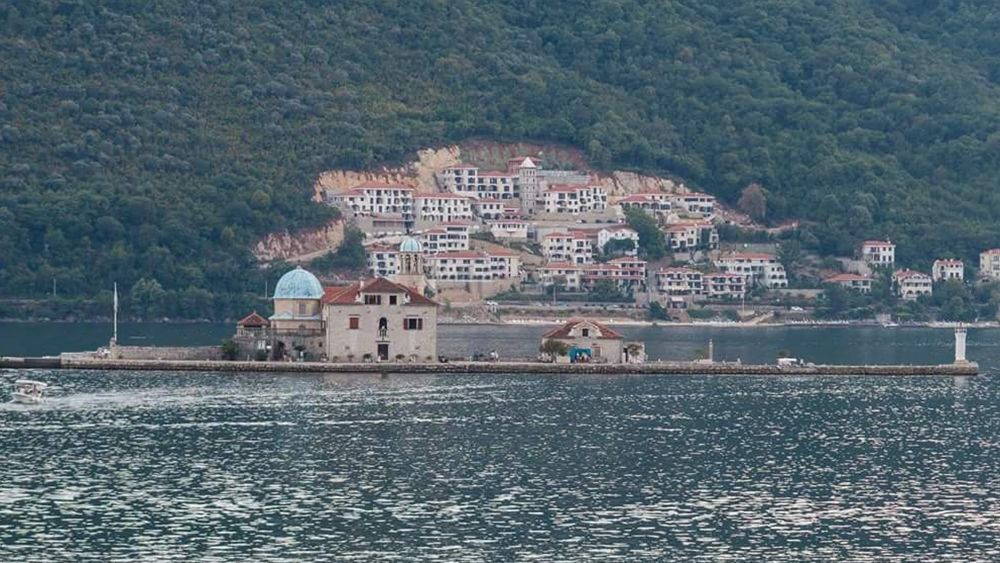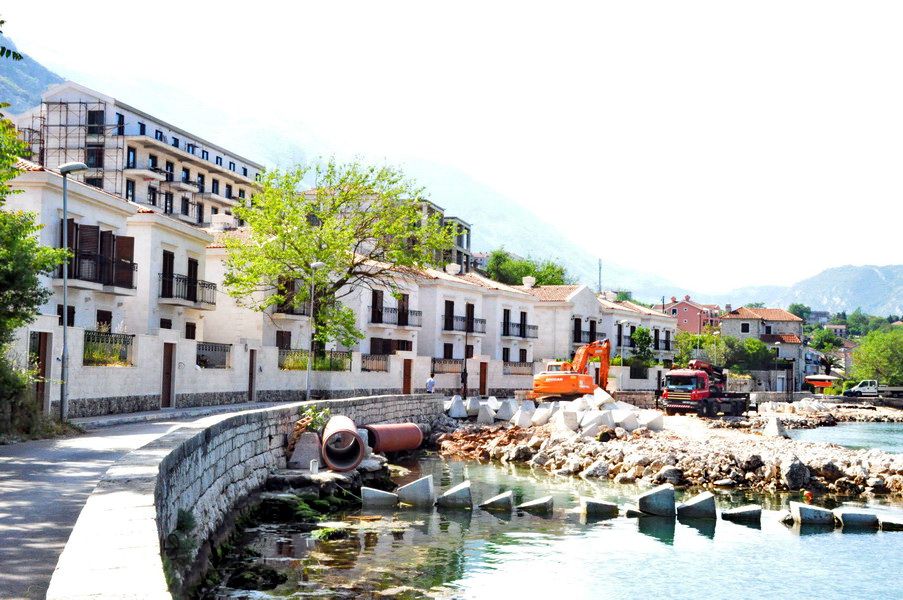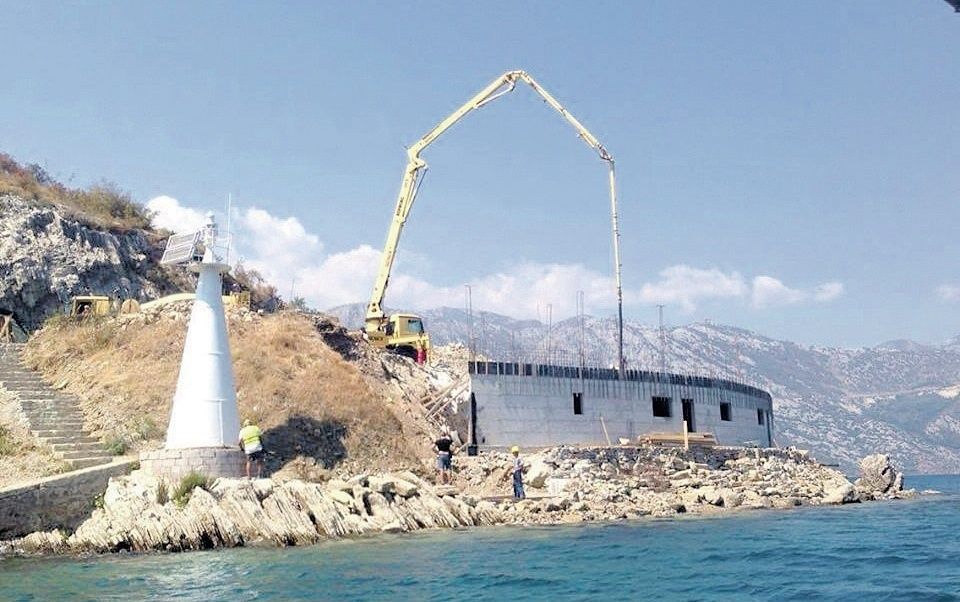This week, the Joint Reactive Monitoring Mission of UNESCO - the World Heritage Center and ICOMOS is being held in Montenegro, with the aim of analyzing the implementation of the World Heritage Committee's recommendations from Bahrain, as well as earlier summits, where Montenegro has been warned several times that by endangering unique universal values, the Kotor area is in danger of being deleted from the World Heritage List. On his view of the state of affairs and the compliance of the competent national and local institutions with the implementation of UNESCO recommendations, we spoke with the President of the Municipality of Kotor, Vladimir Jokić.
What is the real situation in the area with regard to the conclusions that have been made at the meeting of the World Heritage Committee in Bahrain?
- Conclusions from the Bahrain summit include a salute to the decision of the Montenegrin Government to introduce a moratorium on construction in Kotor, which was not my best conviction or was a move that could bring the desired result. You have witnessed that a large number of construction permits were issued because people realized rights before the introduction of the moratorium. On the other hand, the HIA (Heritage Impact Assessment) study conducted in the Kotor area obviously did not meet the criteria it was supposed to meet, did not give clear recommendations where to go, which brings us to the current position of having a new construction. We have the construction in some places that was pretty delicate, like building a beach in Dobrota. On the other hand, keeping in mind the new Law on Spatial Planning and Construction of Facilities, in the area that should be specifically protected, we do not have any inspector for building control. The Ministry of Sustainable Development and Tourism has simply failed to fill the site of inspectors and thus protect this area, even though the four inspectors provided by this law are not sufficient for quality control of activities in the protected area. Bearing in mind all these circumstances, I think that at this time we cannot be satisfied with the situation. There is also part of the responsibility of the Municipality of Kotor, which is the issuance of spatial planning documentation- the adoption of the Urban Plan of the Municipality of Kotor. At this time, the forerunner we have on the table is not satisfactory. All this is very burdened by this space.
 The construction project in Kostanjica is still on the table, making this "wound in space" grow to the new 32,000 square meters. There is no legal barrier to continuing the devastation in front of the Baroque Perast, explains Jokić.
The construction project in Kostanjica is still on the table, making this "wound in space" grow to the new 32,000 square meters. There is no legal barrier to continuing the devastation in front of the Baroque Perast, explains Jokić.
"We had several meetings with the relevant ministers and their teams on this topic. And personally, and as the President of the Kotor Municipality, I would like to deny me and find some solution that has been hinted at in these talks, but it seems to me that everything will be reduced to what we have been warning from the beginning, which is that all legal conditions for further construction have been acquired. The only reason we do not have the construction in this area today is the intention of the Kotor administration, which was publicly mentioned several times, not to allow such a project that would ultimately endanger our status on the UNESCO list.
-I repeat once again that I am constantly trying to emphasize to the public - UNESCO is here today, with some decision tomorrow and that does not exist. What should be our overriding goal is to make a consensus about how we will use, develop and preserve the space we have to manage. I'm not for conserving this space, I'm not about to stop developing this area, but there have to be rules for how we will develop. I hope that the Joint Reactive Mission of UNESCO and ICOMOS could be a “basic stone” to turn our development orientation to- what is so much a phrase in Montenegro that no longer makes any sense, but to return to the essence of these words and to their full meaning- truly achieve sustainable development. To the development that will mean the progress of the city while not degrading the unique universal values of this area, the development that will not represent a permanent devastation of space, which we could testify to several locations in Kotor," says the president of the Municipality of Kotor.
 The competent state institutions have repeatedly made decisions that do not go hand in hand to proper protection of the area of Kotor and the need for the world heritage site to be carefully managed. In addition to the legislative framework for planning and construction of space, led by the Law on Space Planning and Construction of Facilities, there are also questionable ideas for improving the road infrastructure in the protected area and in its buffer zone. Apart from the plan for the construction of the bridge over the straits of the Verige, for which UNESCO has determined decisively several times that it is incompatible with the survival of the Kotor area on the World Heritage List, has recently speculated about the project of extending the Kotor-Njeguši serpentines to the two-way road.
The competent state institutions have repeatedly made decisions that do not go hand in hand to proper protection of the area of Kotor and the need for the world heritage site to be carefully managed. In addition to the legislative framework for planning and construction of space, led by the Law on Space Planning and Construction of Facilities, there are also questionable ideas for improving the road infrastructure in the protected area and in its buffer zone. Apart from the plan for the construction of the bridge over the straits of the Verige, for which UNESCO has determined decisively several times that it is incompatible with the survival of the Kotor area on the World Heritage List, has recently speculated about the project of extending the Kotor-Njeguši serpentines to the two-way road.
- The legislative framework for space planning, in particular, the new Law on Space Planning and Building Facilities, is inapplicable, as evidenced by the practice. For a year, the Ministry of Sustainable Development and Tourism failed to team inspectors to implement this law. Its inaccessibility will be especially demonstrated when adopting the General Regulatory Plan. It's about a year and a half to make that plan, I do not see how they can do it. A particular problem is taking ingestion to municipalities in planning and disposing of their own space. Of course, the previous situation with hundreds of plans for the Montenegrin area was not a happy solution. But, as I pointed out, even when adopting the Action Plan for meeting UNESCO's requirements, it is better to have anything but to have no plan. If you put plans out of force and say - construction is prohibited, who guarantees that it will be respected? When you have a plan, you can keep control at some level, without plans you cannot do anything. I am afraid that this legislative framework will lead us in that direction.
As for the project of the extension of the Kotor-Njeguši road, I have to admit that I am not familiar with this project, I have not been informed of such intention. As far as the Verige Bridge is concerned, it is so many times that UNESCO opinion is placed on the table for the relevant ministries, so that I cannot see the way that this project can be realized without causing permanent consequences for Boka and the status of Kotor on the World Heritage List, adds Vladimir Jokić.
Asked if there is synergy in the work of national and local governance bodies in implementing UNESCO requirements, Jokić explains that expert-level talks are currently underway, which may be the basis for making responsible decisions.
- I have to point out that the Municipality of Kotor had several meetings with Ministers of Tourism and Culture, Mr. Pavle Radulovic and Mr. Aleksandar Bogdanovic and their teams, with the intention of finding a method and a model to secure this space with a good planning document. Whether this will result in such a document, it remains to be seen. Within its scope, the Municipality of Kotor makes efforts to make this document. At this moment I cannot say that we encounter obstructions, we still have good communication at the expert level. I hope that the result of these consultations will be a quality document. As far as we do not agree, the differences between us are sometimes monumental, we all have the obligation not to allow the status in any way be endangered in the coming year at the 40th anniversary of the entry of the Kotor area into the UNESCO list.
Repeat-adequate treatment and heritage protection is not an obstacle to development. There are examples everywhere in the world of areas that had the same problems. When there are good will and responsibility on both sides, then a solution can be found. In the closest vicinity, we have the hotel Ruža in Mostar. For five years, UNESCO and the local government have talked to the investor about how this can be done. Today, at the hotel Ruza, the biggest Marriott in Europe is the way that UNESCO welcomes this project because the project is incorporated in what is the unique universal value of that space. So there are ways. But it cannot be that you build concrete mastodons in locations where you cannot build them. It cannot be that one building is blue, another green and a third yellow one. These are not ways. It cannot be that law allows you to have six basements in your building.
What gives hope that this time consultation with relevant ministries will lead to the adoption of a joint plan for the Kotor area, if we know that under the auspices of the Ministry of Sustainable Development and Tourism and in the green light of the Ministry of Culture, specifically the Department for the Protection of Cultural Property, the biggest devastation in the protected area, such as construction of “Pentagon” Building, Turski rt, or Kostanjica, are done?
-I pointed out that communication was established at an expert level. Our experts are communicating, exchanging information on how some things should be done. Of course, when it comes to the decision-making phase, we will really be able to see a good will there. What I have repeatedly pointed out is that it is impossible and unacceptable to pull the line and say that for whatever has been done so far no one is responsible. Responsibility must exist, there is no dilemma about this. However, at this moment, when we have a UNESCO Reactive Mission, when we have the conclusions of the session in Bahrain, when we are expecting the next year summit, on the forty-year anniversary of the entry of Kotor on the World Heritage List - we have to find a minimum of understanding in order to produce some document that would protect this space. So, at the moment, on an expert level, things are happening in a satisfying way. When it comes to decision making, we have been in a situation a lot of times that things have been changed overnight. What I can say is that the Municipality of Kotor will give its full contribution and we will not allow this process to run from other addresses if we are not included in it," explained the Mayor of the Kotor Municipality, Vladimir Jokić.
Representatives of UNESCO - the World Heritage Center and ICOMOS will discuss this with representatives of relevant ministries and other relevant state institutions, representatives of the Kotor Municipality and local institutions as well as civil society organizations. The visit also includes a tour of the protected Natural and Cultural-Historic Area of Kotor. The objective of the Reactive Monitoring Mission is to conduct an overview of the overall state of preservation of the good as well as to evaluate progress in meeting the UNESCO Committee Decision in Bahrain, as well as the previous decisions of the Committee and the recommendations of previous missions. The Reactive Mission should prepare a report that will give the World Heritage Committee specific recommendations, to be considered at its 43rd summit next year.








